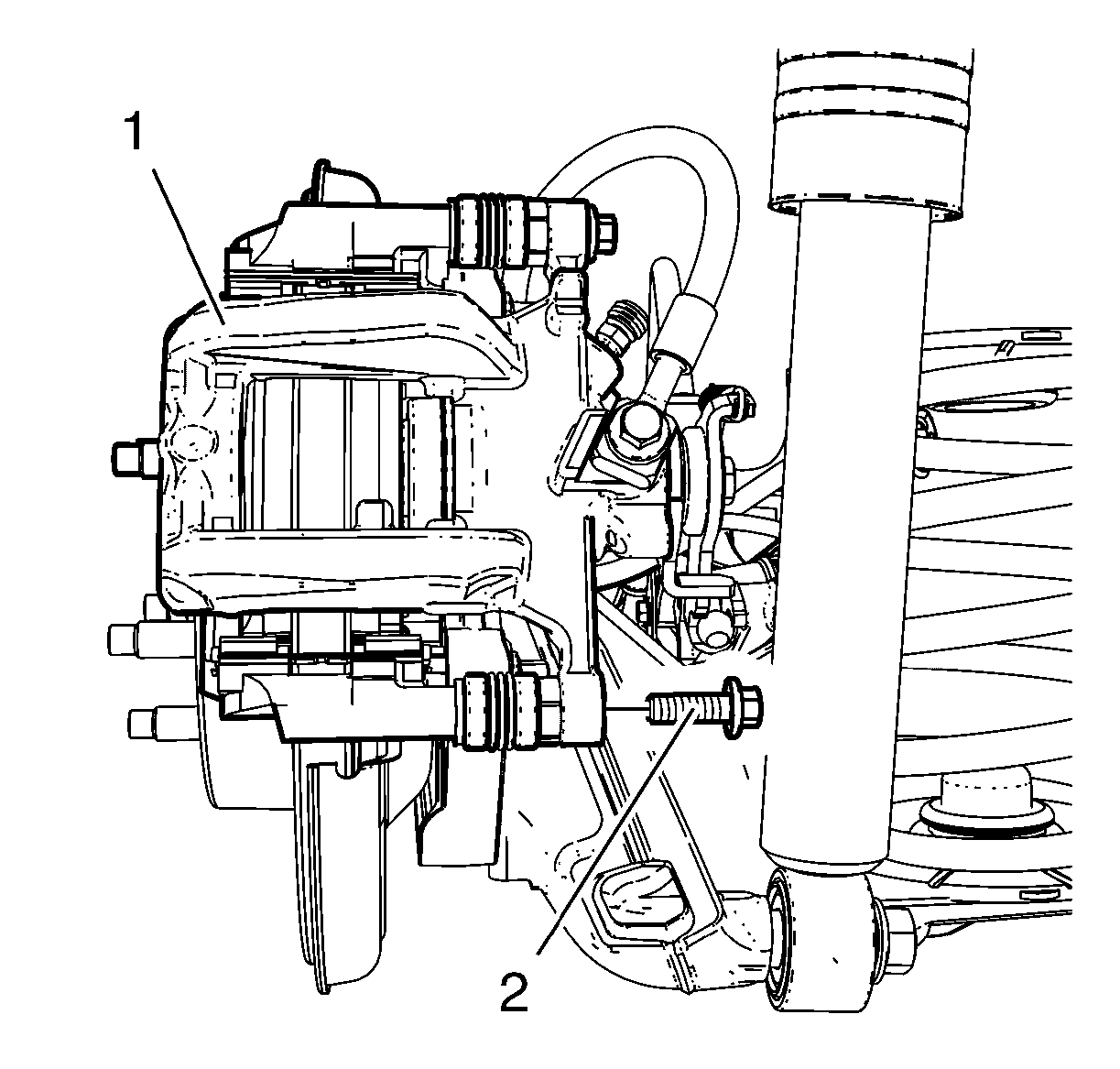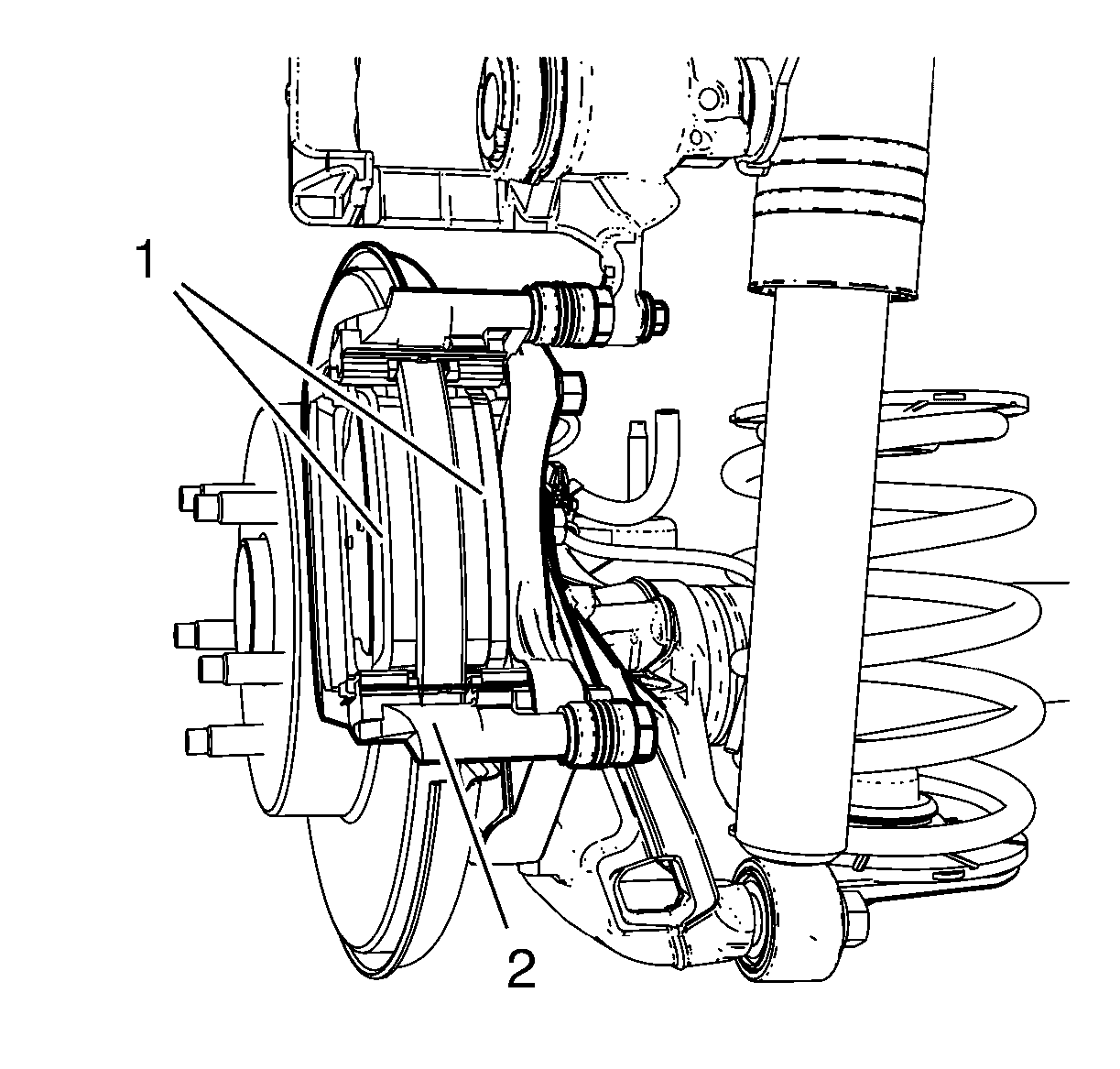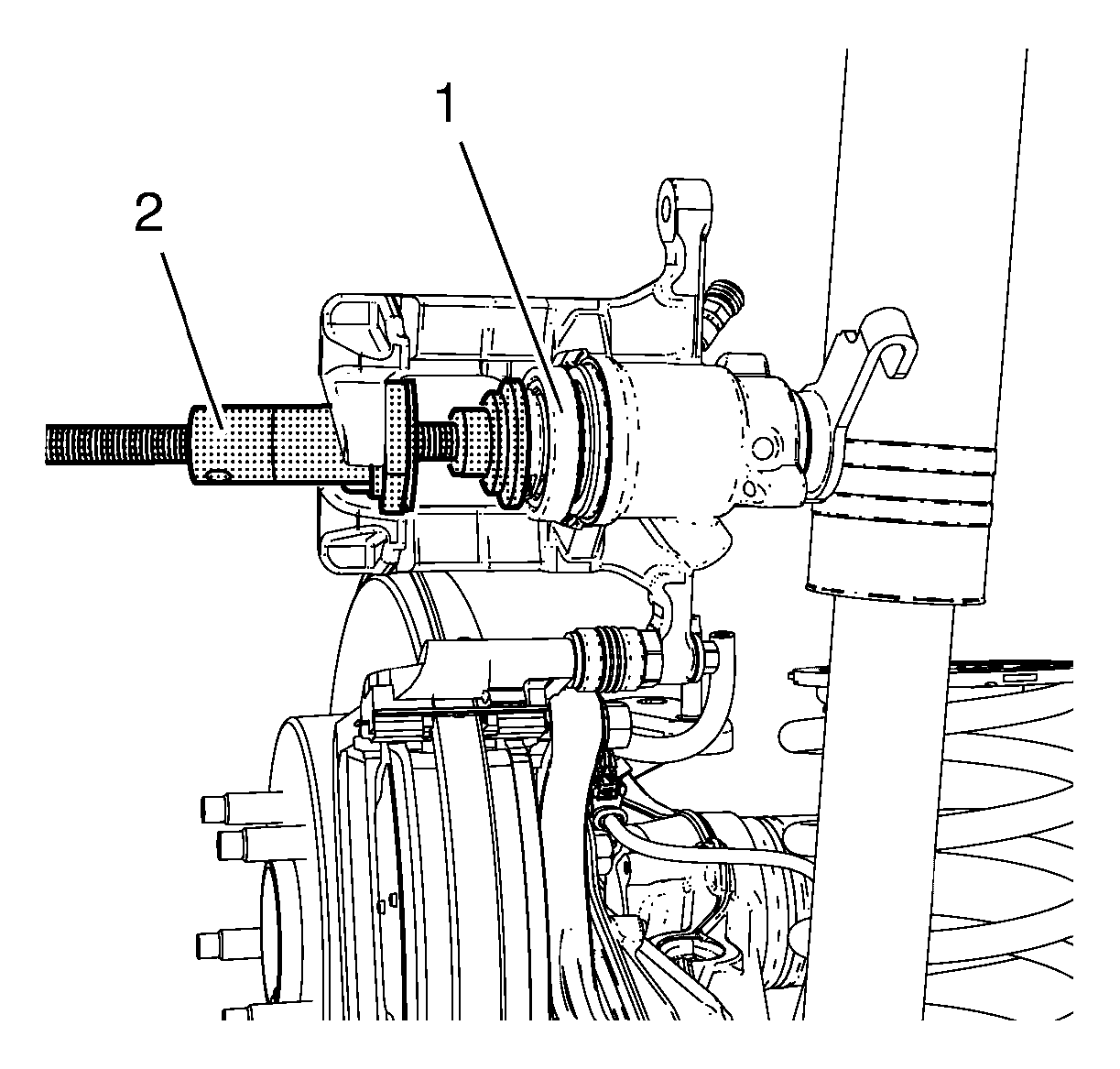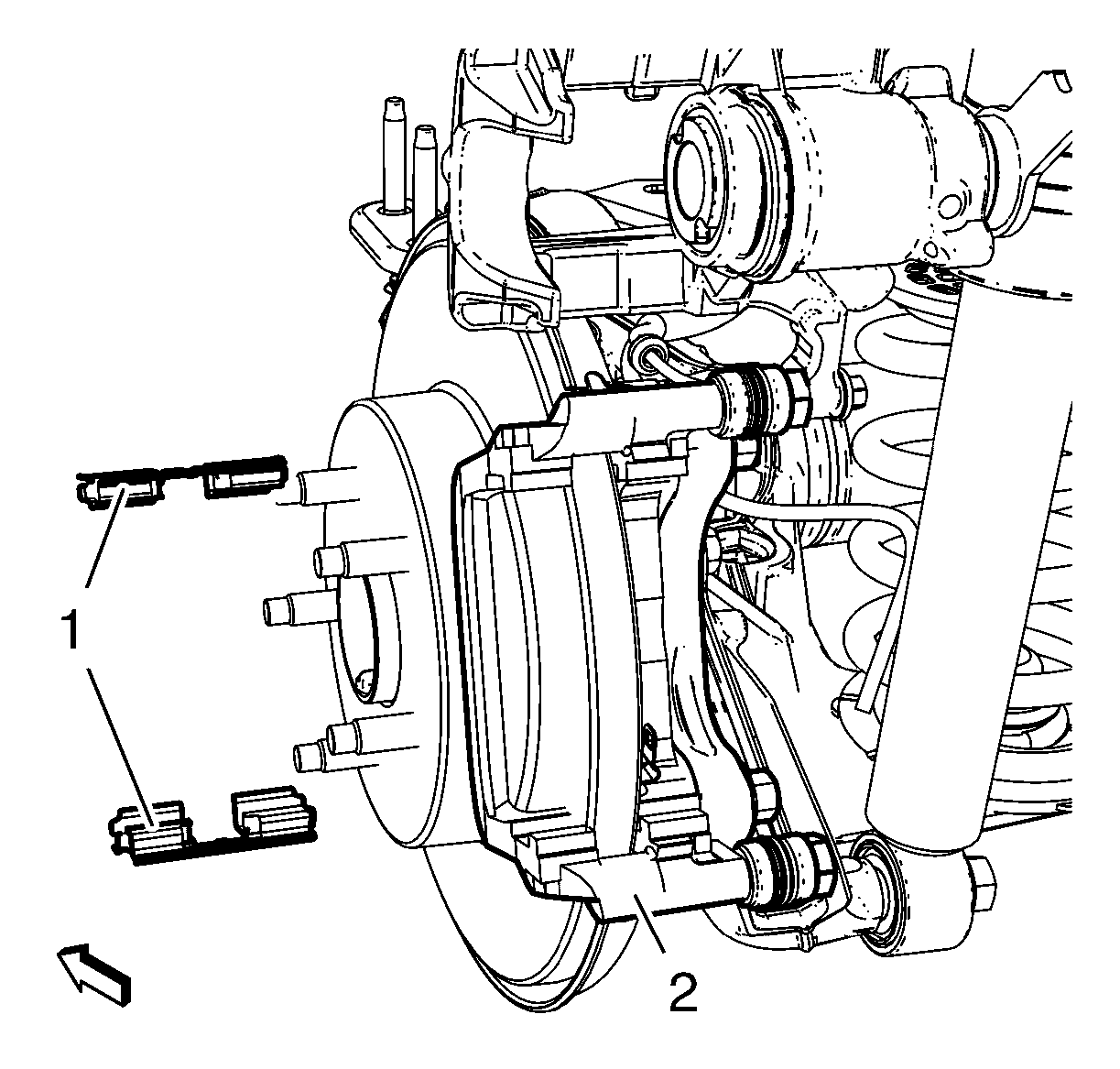Special Tools
| • | CH-6007-B Disc Brake Piston Installation Tool |
| • | CH-6007-50 Adapter |
For equivalent regional tools, refer to Special Tools.
Removal Procedure
- Inspect the fluid level in the brake master cylinder reservoir.
- If the brake fluid level is midway between the maximum-full point and the minimum allowable level, no brake fluid needs to be removed from the reservoir before proceeding.
- If the brake fluid level is higher than midway between the maximum-full point and the minimum allowable level, remove brake fluid to the midway point before proceeding.
- Raise and support the vehicle. Refer to Lifting and Jacking the Vehicle.
- Remove the tire and wheel assembly. Refer to Tire and Wheel Removal and Installation.
- Remove the brake caliper lower guide pin bolt (2).
- Without disconnecting the hydraulic brake flexible hose, pivot the caliper (1) upward and secure the caliper with heavy mechanics wire, or equivalent.
- Remove the brake pads (1) from the caliper mounting bracket (2).
- Turn back the disc brake caliper piston (1) into the caliper bore using the CH-6007-B installation tool with CH-6007-50 adapter (2).
- Remove the brake pad retainer springs (1) from the caliper bracket (2).
- Thoroughly clean the brake pad hardware mating surfaces of the caliper bracket, of any debris and corrosion.
- Inspect the brake caliper guide pins for freedom of movement, and inspect the condition of the guide pin boots. Move the guide pins inboard and outboard within the bracket bores, without disengaging the slides from the boots, and observe for the following:
- If any of the conditions listed are found, the brake caliper guide pins and/or boots require replacement.
Warning: Refer to Brake Dust Warning in the Preface section.
Warning: Refer to Brake Fluid Irritant Warning in the Preface section.

Caution: Support the brake caliper with heavy mechanic wire, or equivalent, whenever it is separated from its mount and the hydraulic flexible brake hose is still connected. Failure to support the caliper in this manner will cause the flexible brake hose to bear the weight of the caliper, which may cause damage to the brake hose and in turn may cause a brake fluid leak.
Mark the brake caliper piston position to the brake caliper (1).



| • | Restricted caliper guide pin movement |
| • | Looseness in the brake caliper mounting bracket |
| • | Seized or binding caliper guide pins |
| • | Split or torn boots. |
Installation Procedure
- Ensure the brake pad hardware mating surfaces are clean.
- Install the brake pad retainers springs (1) to the brake caliper bracket (2) and apply a thin coat of high temperature silicone lube to the brake pad retainers. Refer to Adhesives, Fluids, Lubricants, and Sealers for the recommended lubricant.
- Install the brake pads (1) to the caliper bracket (2).
- Need GRAPHIC NUMBER. Check the correct position of disc brake caliper piston (1).
- Remove the support, and rotate the brake caliper (1) into position over the disc brake pads and to the caliper mounting bracket.
- Check position of piston cavity after assembling caliper (1).
- Install the lower brake caliper guide pin bolt (2) and tighten to 28 N·m (21 lb ft).
- Install the tire and wheel assembly. Refer to Tire and Wheel Removal and Installation.
- Lower the vehicle.
- With the engine OFF, gradually apply the brake pedal approximately 2/3 of its travel distance.
- Slowly release the brake pedal.
- Wait 15 seconds, then gradually apply the brake pedal approximately 2/3 of its travel distance again until a firm brake pedal apply is obtained. This will properly seat the brake caliper pistons and brake pads.
- Fill the master cylinder auxiliary reservoir to the proper level. Refer to Master Cylinder Reservoir Filling.
- Burnish the pads and rotors. Refer to Brake Pad and Rotor Burnishing.


Note: The wear sensor equipped disc brake pad must be mounted inboard of the rotor with the leading edge of the sensor facing the brake rotor during forward wheel rotation, or at the top of the pad when installed in vehicle position.
Cavities for brake pad anti-rotation pin (2) must be aligned as shown in graphic, in order to ensure an appropriate mounting onto the inner brake pad.

Caution: Refer to Fastener Caution in the Preface section.
